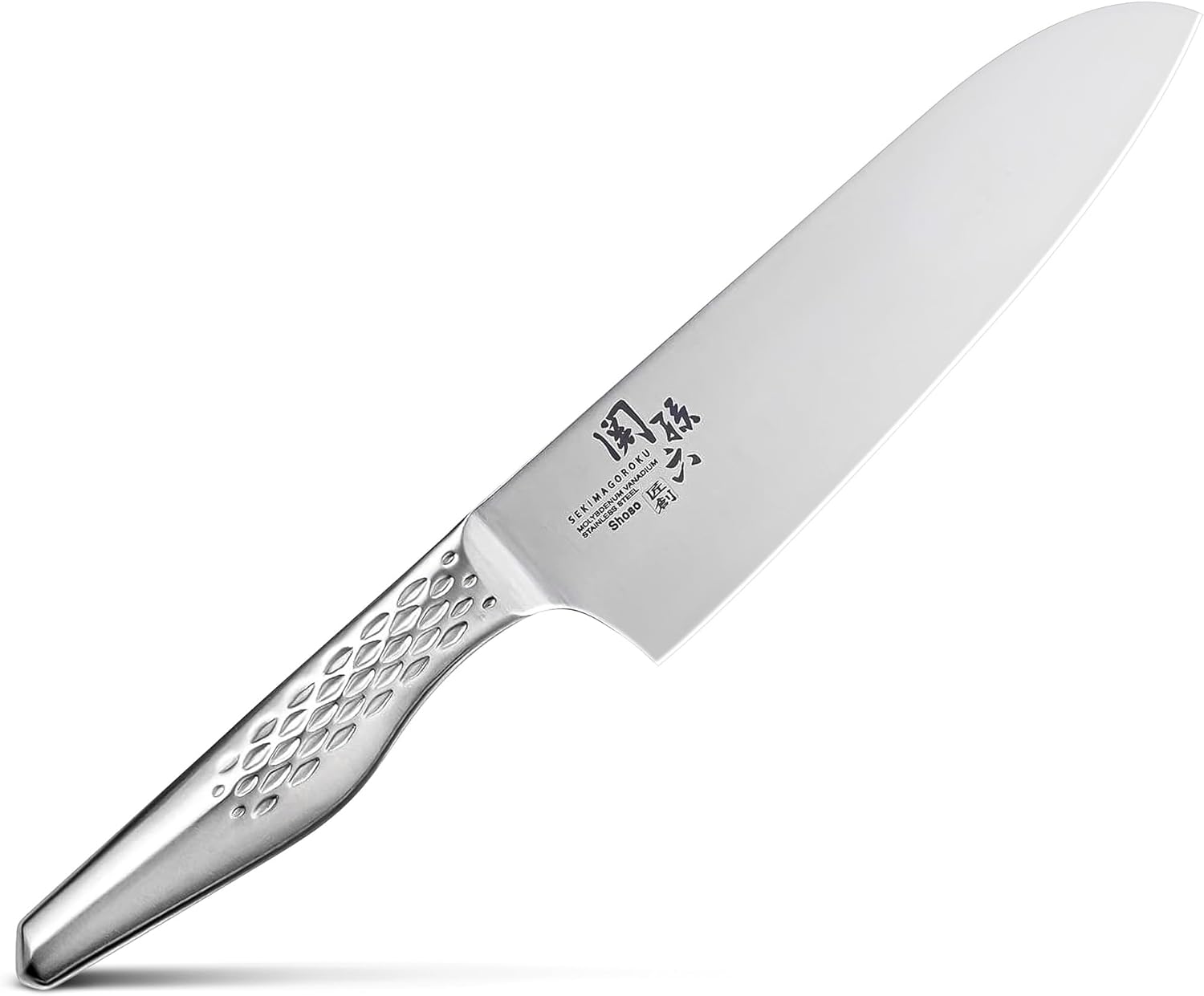A santoku knife is a versatile, general-purpose kitchen knife that originated in Japan. The name “santoku” translates to “three virtues” or “three uses,” referring to its ability to handle a wide variety of ingredients (fish, meat, and vegetables) or perform multiple tasks (chopping, dicing, and slicing).
Blade
Blade Shape: It has a flat edge and a sheepsfoot blade that curves down at an angle approaching 60 degrees at the point. This design allows for a single downward cut motion, as opposed to the rocking motion used with Western chef’s knives.
Length: Typically between 13 and 20 cm (5.1 to 7.9 inches) long.
Edge: Can be single-beveled (sharpened on one side) or double-beveled (sharpened on both sides).
Material: Often made of harder, thinner steel compared to Western knives, allowing for more precise cuts.
Used for
Santoku knives excel at various kitchen tasks:
・Creating fine, thin slices, particularly useful for vegetables and seafood
・Cutting meat and cheese
・Slicing, chopping, and dicing fruits, vegetables, and nuts,
・Mincing meat or herbs

